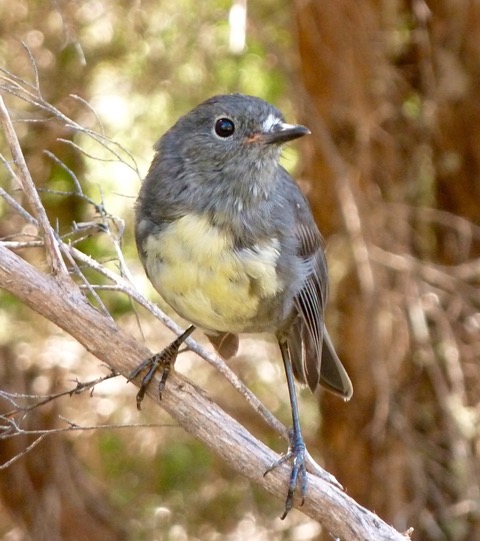The Department of Conservation and the Predator Free movement are not facing up to ecological realities and the consequences of disrupting nature’s food chains, says Canterbury-based scientist Dr Jo Pollard in an article in the latest New Zealand Deerstalkers’ Association magazine “New Zealand Hunting and Wildlife.”
“Unfortunately there is a history of dysfunction whereby conservation management has departed from science,” she said. “The science indicates a need for careful studies and saving habitat rather than mindless interference and indiscriminate poisoning.”
Dr Pollard cited instances where the department ignored scientific studies that had pointed out the detrimental consequences of major interference with the role of predators. A Landcare Research study found when other mammals such rats and stoats were fenced out of a reserve, mouse numbers rose. The increased number of mice feeding on weta, caterpillars and other invertebrates seemed to reduce the invertebrate numbers, with potentially “catastrophic effects.”
“There are serious questions about how to deal with increasing mice, once some of their major predators and competitors have been killed off in naive attempts to “fix” nature,” she said.
Prey Switching
Studies of alpine-dwelling stoats have confirmed rats are the stoat’s preferred prey, with small birds being a very minor component of the diet, less than 2 percent, where rats were present. However in an alpine area lacking rats, stoats ate small birds (15-26 percent of the diet) and skinks (19-57 percent).
The food chain gets more complex as shown by studies on 38 Fiordland islands where Norway rats or stoats were removed several decades ago. In the absence of these predators, native robins flourished, seemingly aggressively ousting other birds such as grey warblers, silvereyes and tomtits.
“The authors warned that killing off predators to achieve ‘restoration’ can cause declines and disappearances of native bird species,” said Dr Pollard. “Taking away the introduced predators had seemingly reduced the diversity of birds.”
Two recent studies demonstrated the classic rat population response to aerial 1080 poisoning with numbers rebounding after several months and reaching higher levels than before poisoning began.
“Rats are especially well equipped, through their lifestyle and physiology, to withstand a 1080 poison war,” said Dr Pollard.
Habitat Key
Ecology Professor Carolyn King’s advice from decades ago was that that “conservation of species is conservation of habitats” noted Dr Pollard.
Encouragingly, a recent Landcare study stressed the need to preserve habitat, stating its loss and modification “is a principal, ongoing cause of indigenous biodiversity decline.”
Dr Pollard was critical of the Department of Conservation’s one dimensional approach saying DoC’s leading scientist Graeme Elliott should have, decades ago, heeded Professor King’s advice and focussed on the observation that mohua, needing tall forest trees on valley floors, were suffering from habitat loss. Instead Elliott blamed the mohua’s decline on stoats, leading to rampant stoat trapping, followed by rats – stoat’s prey – subsequently getting out of control and eating the mohua.
The final nail in the coffin was DoC’s onset of aerial poisoning to quell the rats.
“Perhaps the Predator Free movement and DoC might yet face up to and respect ecology,” said Dr Pollard.


Well done Dr Jo Pollard for challenging the shaky justification for zero predators hysteria. Recently I read beginning with aquatic experiments, scientists are amassing considerable evidence of damage done to food chains by predator removal and have extended such studies to land.
Google Yale Environment on predators which says “scientists have recently begun to understand the vital role played by top predators in ecosystems and the profound impacts that occur when those predators are wiped out.”
Of course extermination is virtually impossible. It has been proved time and time again to be a futile dream.
The point Dr. Pollard makes is that the Department of Conservation should know better.
Predator-Free movements are not necessarily scientists but are idealists or should I say zealots or fanatics?
DoC is in need of review, restructuring and a reordering of its culture and priorities.
All data from Jamiesons study after brodifacoum drop on Ulva Island shows up to 75% loss for all species, some of course worse. It is disgusting that DOC et al know the cost of poisoning to our wildlife , it well exceeds any perceived benefit.
It seems to me that current endemic mismanagement of our wild places must stop. A whole new focus must take place, new people, independent of government or the current system. “First do no Harm”
Dr Jo Pollard as usual has hit the nail on the head.
Jack and J.B, you are both spot on.
When is DOC going to have some accountability for the damage it has done, listen to proper experts, quite honestly this government and the previous ones have done so much damage to our country, time to have a massive shake up, sick and tired of the b. s
Anyway,
It is time to leave the final words of truth to the great author Bill Benfield.
“Pushing against nature as these mad mass indiscriminate poison operations do is like pushing against a spring a futile exercise, as the spring will always return to its setting position”.Mean time, much effort & public expense has been incurred to simply arrive back at the starting point with a basket full of unwanted & unintendedharmful consequences.
The indiscriminate use of 1080 poison for the last 60 years to eradicate predators has done nothing to to enhance native wild life if you believe the DoC as they say more species are on the endangered list.
Having recently traveled in Sth Westland noticed 1080 poison warning signs at regular intervals yet there were numerous dead possums on the road, it’s my belief that they and predators are becoming very shy of 1080 poison.
Nature always prevails intervention by humans stuffs it up.
About time there was some pushback against the insane “predator free” agenda, well done Dr. Pollard. Predator free as stupid and misguided as the “carbon free” nonsense that is laying waste our economy and our country for NO GOOD REASON!